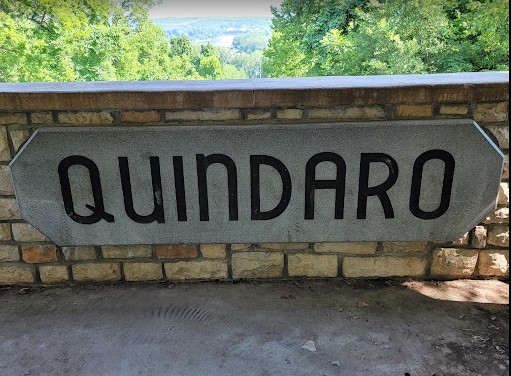Honoring Black History, Past and Present
- KC Destinations
- Feb 6, 2024
- 3 min read
Black History Month honors and celebrates the vibrant heritage of African Americans. Across the member cities of the Kansas City Regional Destination Alliance, an array of museums, captivating self-guided tours, inspiring art galleries, and poignant stories await--ready to be explored and shared.
Liberty, MO
The African American residents of Liberty, MO established the Garrison School in 1877 as the first public school in Liberty for black children. After the first Garrison School building was destroyed in a fire in 1910, the current school, located at 502 N Water St., was built in 1911, and went on to earn the reputation of being the best school for African American students in the state of Missouri.
Today, the Garrison School serves as the offices for The Clay County African American Legacy Inc. where they host a variety of cultural and educational programs and events. CCAAL has also compiled a brochure of African-American historical sites in Liberty that can easily be made into a self-guided driving tour.
Leavenworth, KS
A uniquely immersive experience awaits at Leavenworth’s African-American history museum, the Richard Allen Cultural Center. This collection explores the achievements of trailblazing soldiers like Cathay Williams, General Colin Powell and the women of the 6888th Battalion. The Museum is in the former home of Captain William Bly, a World War I veteran and member of the U.S. Army’s “Buffalo Soldier” cavalries, with period typical décor and Bly’s own memorabilia on display. A Richard Allen visit is complemented by a trip to neighboring Fort Leavenworth, home to the Buffalo Soldier Monument and the Circle of Firsts, a statue garden honoring groundbreaking Black troops throughout history.
Kansas City, KS
The Northeast area of Kansas City, KS holds significance to our nation's most important lesson, and perhaps there is no more impactful place in the city to reflect on this than the Quindaro Ruins Overlook. Founded in 1856, Quindaro Town, named for Nancy Quindaro Brown, was a once-bustling Civil War-era port of entry into Kansas and stop on the Underground Railroad. The ruins of the town can be viewed from a stone platform at the Quindaro Ruins Overlook. The archeological ruins serve as a monument to racial harmony and to freedom. They have cultural and historical value for the descendants of Native Americans who once owned and occupied the site, for African Americans whose ancestors once looked to Quindaro as a gateway to freedom and for the descendants of European Americans who saw the need to found a Free State port and fight slavery. In April of 2019, the federal government officially designated Quindaro as a National Commemorative Site.
Merriam, KS
Merriam holds a strong commitment to our city’s Black history, honored through various events and historic sites. In February, visit the Tim Murphy Art Gallery located inside the Merriam Community Center to view the exhibit titled "African Americans & the Arts," which showcases the vibrant contributions of the Black community (Feb. 1-24).
Merriam's historical significance extends to pivotal legal cases, such as Webb v. School District No. 90, a precursor to the groundbreaking Brown v. Board of Education decision. The Webb case laid the foundation for dismantling segregation in education and marked a significant step towards equality. In fact, on February 3, 2024, the Kansas Historical Society's Board of Review approved the nomination for the former Madam CJ Walker School, now Philadelphia Missionary Baptist Church, to the Kansas Registry of Historic Places. For those eager to delve deeper into Merriam's Black history, visit exploremerriam.com/history which offers a comprehensive exploration of our city’s diverse and impactful heritage.
Bonner Springs, KS
Visit the National Agricultural Hall of Fame in Bonner Springs to hear and see the stories of America’s farmers and farming pioneers. One such pioneer was Junius G. Groves who was inducted into the Hall of Fame in 2023. Junius Groves was born in slavery on April 12, 1859, in Louisville, Kentucky. He came to Kansas at the age of 19 during the time of the Exoduster Movement of ex-slaves from Southern states along the Mississippi River. He began farming near Edwardsville, Kansas, where he purchased 80 acres and raised white potatoes. Much of Groves’ success was due to his 46 years of devotion to the science of agriculture. He earned the title “Potato King of the World” in 1902 for growing the largest number of bushels of potatoes per acre, more than anyone else in the world up to that point. By 1900, Groves bought and shipped potatoes, fruits and vegetables extensively throughout the United States, Mexico and Canada.
















Comments